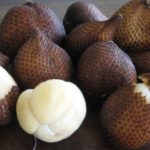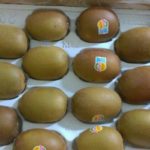Pineapple is a tropical fruit that is available year-round, but it reaches its peak of sweetness and nutritional value during the summer months. This delicious fruit is packed with essential nutrients such as vitamin C, protein, calcium, iron, and phosphorus. Beyond its refreshing taste, pineapple offers a host of benefits, including improving skin health, detoxifying the body, boosting immunity, reducing inflammation, and aiding digestion.
The best pineapple is one that is perfectly ripe, offering a unique combination of sweetness and a captivating aroma. However, selecting a ripe and tasty pineapple can be a challenge for many. Without the right knowledge, you might end up with a sour or bland fruit.
To help you choose the perfect pineapple, here are four key characteristics to look out for:
Observing the Color of the Pineapple’s Skin
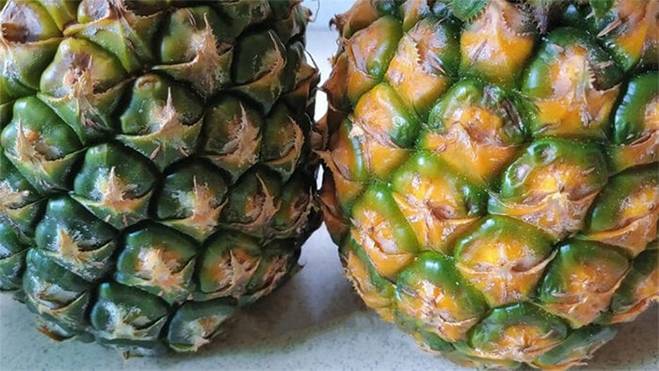
How to choose a delicious pineapple: Examine the skin. (Source: Sohu)
When it comes to selecting a pineapple, you’ll typically come across three color variations: deep yellow, green with a hint of yellow (more green than yellow), and yellow with a hint of green (more yellow than green). So, which color indicates the ripest and sweetest pineapple? While many people assume that a deep yellow pineapple is the best choice, this is not always the case.
The reason some pineapples turn entirely deep yellow is that they have been left on the plant for too long and have become overripe. From the outside, they may not look vastly different from a perfectly ripe pineapple, but once you cut into it, you’ll notice the difference. The flesh may be mushy, and in some cases, it can even have black spots.
Pineapples that are mostly green with a hint of yellow are likely underripe. Their shells are relatively hard, making them suitable for stir-fries or soups, but not ideal for direct consumption as they may taste bland and even cause discomfort in the stomach if consumed in large quantities.
The best option is to go for pineapples that have more yellow than green. These pineapples offer the perfect balance of sweetness and crispness, without being mushy.
Examine the Pineapple’s Leaves
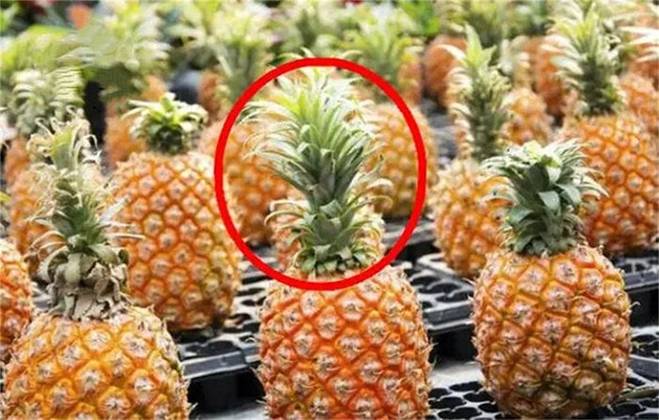
You can choose a delicious pineapple by observing the leaves. (Source: Sohu)
Only pineapples that have received ample sunlight and sufficient nutrients will have long and dense leaves. This indicates that the fruit will also be crisp and sweet. On the other hand, pineapples with short and sparse leaves suggest inadequate sunlight and nutrient absorption. These pineapples tend to be less sweet, with a less prominent aroma and possibly lower juice content.
Inspect the Pineapple’s Base
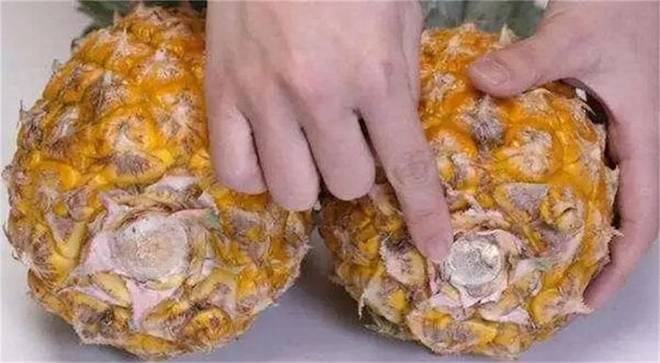
The base of an old pineapple will look withered and have dense black spots. (Source: Sohu)
To determine the freshness of a pineapple, take a close look at its base. Generally, fresh pineapples do not have black spots at the bottom, and the surrounding leaves remain relatively green. In contrast, the base of an old pineapple will look withered and have dense black spots. These spots are likely signs of mold, and the inner flesh may be rotten, so it’s best to avoid purchasing such pineapples.
It’s important to note that if you cut into a rotten pineapple and remove the affected parts, it’s still not safe to consume. Once a pineapple starts to rot, various microorganisms, especially fungi, begin to proliferate rapidly. These harmful substances can spread throughout the fruit, potentially leading to vomiting and diarrhea if consumed.
Check the Pineapple’s Eyes
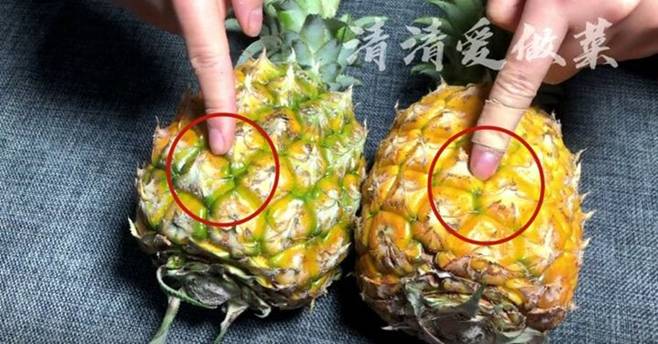
How to choose a delicious pineapple. (Source: Sohu)
The final point of observation when selecting a tasty pineapple is to examine the density of its eyes. If the eyes are tiny and densely packed, it indicates that the pineapple has not received enough sunlight, and it will likely be less sweet. Conversely, if the eyes are relatively large and spread out, it means the pineapple has received ample sunlight and nutrients. Pineapples with this characteristic will be sweet and fragrant, making them an excellent choice for purchase.
Important Notes When Eating Pineapple
– Opt for fresh, whole pineapples that are free from bruises or damage.
– When peeling a pineapple, make sure to remove all the skin and cut deep enough to get rid of the eyes.
– Wash the pineapple thoroughly with salted water before consumption.
– Avoid consuming fresh pineapple on an empty stomach as it may cause discomfort in the stomach and intestines, leading to nausea.
Source: VTC news
Selecting Yummy Kiwis: A Guide
Do you want to pick a delicious kiwi but don’t know where to start? Look no further – this article will provide you with all the information you need to choose a delicious kiwi! Packed with minerals, vitamins, and antioxidant properties, kiwi is a great addition to your diet and may even treat a variety of ailments. Let’s find out how to select the best kiwi for you!


























